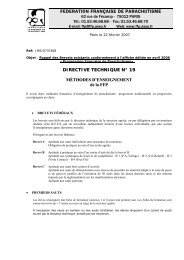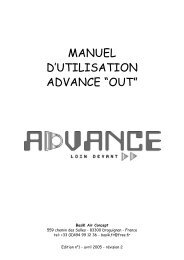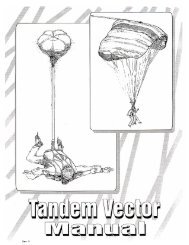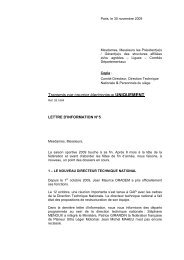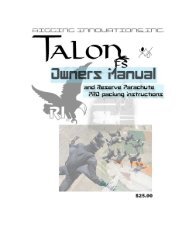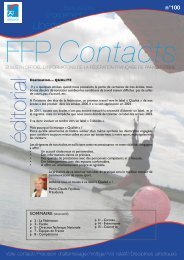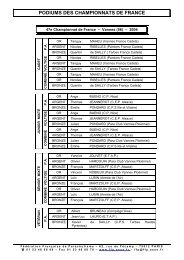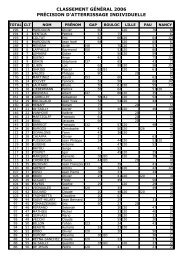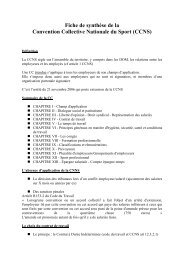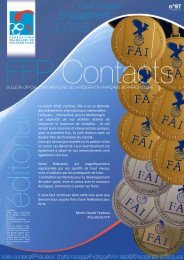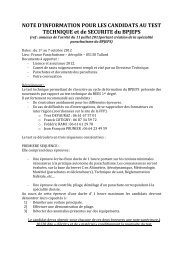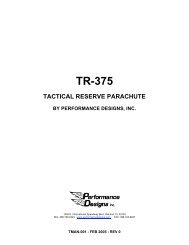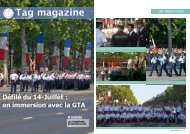tandem vector owner's manual
tandem vector owner's manual
tandem vector owner's manual
Create successful ePaper yourself
Turn your PDF publications into a flip-book with our unique Google optimized e-Paper software.
SIGMA TANDEM SYSTEM OWNER’S MANUAL<br />
The second procedure is a diving type exit. This requires the student to change body position immediately upon exit.<br />
If the student cooperates, then the Tandem Instructor's job is much easier. If the student gets into a less-than-ideal<br />
body position, then the Tandem Instructor will have to work harder to maintain stability. This exit can be done from<br />
kneeling, sitting or standing positions.<br />
Diving exit:<br />
This technique, for many aircraft, is most preferred as it limits the amount of time the Tandem pair spends at the open<br />
doorway, or hanging outside the aircraft. There have been many accidental deployments in the past due to student<br />
interference during climbout for poised or backout exits.<br />
The diving exit will require a more intense arch by the Tandem Instructor to maintain stability. It’s recommended that<br />
you spend a few extra minutes on the ground working on the student’s body position as well. This means the student<br />
will have to transition to the freefall body position immediately after the exit.<br />
Illustration #3/2-109 shows the Tandem pair sitting at the door edge of a Pilatus Porter with feet on the step, just prior<br />
to diving out.<br />
B. Exit tips:<br />
Ideally:<br />
1) Spend as little time as possible while hanging onto the outside of the aircraft, or while near the door. The longer<br />
you spend there, the more you increase the chance of something going wrong.<br />
2) The student must have a good grip on their own main lift web. A student with free hands can only get you into<br />
trouble.<br />
3) The student’s head should be back, body arched, feet together, and weight totally supported by you, before exit.<br />
4) The actual exit should be so smooth that the student hardly notices the difference between hanging under you,<br />
outside the aircraft, or in freefall.<br />
5) The fall away from the aircraft should be head high and very stable. The more unstable your exit and fall away, the<br />
more likely the student is to move, which will cause trouble.<br />
6) If exiting from a small side door such as that found on Twin Beeches, Queen and King airs, etc... a kneeling, sitting<br />
or walkout exit is recommended. Do not use a standing back-out exit as the likelihood of an accidental activation is<br />
high.<br />
C. Exiting different aircraft<br />
Five classes of aircraft come to mind.<br />
1) Cessna with step and strut.<br />
2) Cessna, Piper, or Beech with small cargo door (one in which you can’t stand up - usually no outside step).<br />
3) Caravan or Twin Otter with large cargo door.<br />
4) Skyvan, Casa, or other tailgate aircraft.<br />
5) Helicopter with side door.<br />
Before taking a student out of an unfamiliar aircraft the Tandem Instructor must first take an experienced jumper as<br />
student once or twice until he is comfortable with the climbout and exit from that aircraft.<br />
It is difficult to over emphasize the importance of a stable exit on EVERY Tandem jump.<br />
Note: A Tandem jump does not proceed directly from exit to drogue fall. There is freefall in between the time you<br />
leave the aircraft and the time the drogue deploys. This is where stability is gained from freefall body position and<br />
easily maintained without the drogue. Do not use the drogue to gain stability. Documented proof that a Tandem<br />
Instructor routinely uses the drogue to gain stability will quickly result in his rating being suspended.<br />
11301 - 00.00.0000 Section 3: Intructor Techniques • Chapter2 - In-aircraft & Exits<br />
Page 3:X



